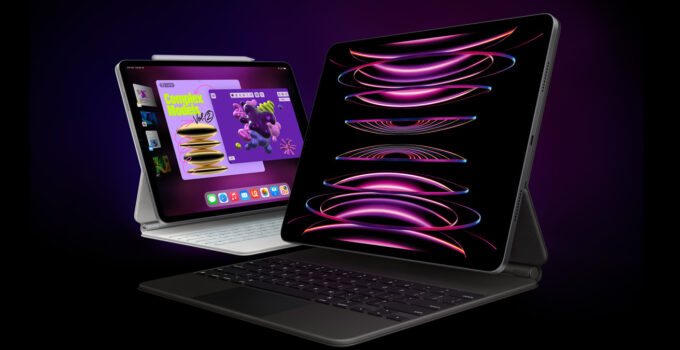The Leap from iPad Pro M2 to M4. “The “Let Loose” event by Apple, which was highly anticipated, did not disappoint as it unveiled the transformative updates brought with the iPad Pro models. This event marked a significant milestone in the evolution of the iPad Pro, introducing features that are not only a leap over the previous generations but also setting new standards for tablet technology.
The Advent of GPT-5: A Landmark in AI Development
Starting with the display, the new iPad Pro models have made a groundbreaking shift to OLED technology, specifically employing a tandem OLED setup. This advanced screen technology integrates two OLED panels to deliver exceptional brightness levels—achieving up to 1000 nits for standard dynamic range (SDR) content and peaking at 1600 nits for high dynamic range (HDR) content. This development not only enhances the visual experience with stunning clarity and color depth but also offers an unprecedented dynamic range that previously was unattainable in similar devices.
Another significant enhancement is the introduction of the M4 processor. Built on a cutting-edge 3-nanometer fabrication process, the M4 chip is a powerhouse, featuring up to four high-performance cores and six efficiency cores. This configuration is supported by the latest machine learning accelerators, pushing the performance envelope to be 1.5 times faster than the previous iPad Pro with the M2 chip. Notably, the M4 chip achieves this superior performance while being incredibly energy efficient—consuming only half the power of the M2 and a quarter compared to contemporary thin and light laptop processors.
The redesign doesn’t stop at internal upgrades. The new iPad Pro has also introduced a nano-textured glass option for the display, which minimizes glare without compromising on color accuracy, making it ideal for outdoor use and professional graphic work where lighting conditions are crucial.
In a surprising move, Apple has decided to simplify the camera system of the iPad Pro by reducing it from two lenses to one. This decision reflects Apple’s confidence in the improved sensor and software optimizations that can deliver high-quality photos and videos without the need for additional hardware.
Storage options have also seen an upgrade. The base model now starts with higher storage capacity, providing users with more space for their professional applications, media, and documents without needing immediate upgrades or external storage solutions.
Moreover, Apple has removed the SIM tray in the new models, steering towards a fully digital eSIM solution. This change underscores Apple’s vision for a more connected and streamlined device, facilitating easier management of cellular plans and international travel without the need for physical SIM cards.
Another notable change is the compatibility enhancements with accessories. The new iPad Pro models are fully compatible with the latest generation of the Apple Pencil and a redesigned Magic Keyboard. The new Apple Pencil now offers more precise input and lower latency, while the Magic Keyboard features a more robust build and improved key mechanisms, providing a more laptop-like experience.
Price adjustments accompany these enhancements, reflecting the substantial upgrades in technology and performance. While this may impact the immediate accessibility of the new models to some consumers, the value presented by the advancements justifies the investment, particularly for professionals and tech enthusiasts seeking the cutting edge in tablet technology.
As Apple continues to push the boundaries with each release, the convergence of the iPad and Mac ecosystems appears more plausible. With such significant advancements encapsulated in the iPad Pro M4, users are now equipped with a device that not only rivals but in many aspects, surpasses the capabilities of traditional laptops.
The evolution of the iPad Pro from M2 to M4 is not just an incremental update—it is a bold stride towards the future of computing, blending the portability of a tablet with the power of a high-end laptop. As we look forward to further innovations, the new iPad Pro stands as a testament to Apple’s commitment to excellence and innovation in the tech industry.
In conclusion, the transition from the iPad Pro M2 to the M4 model exemplifies Apple’s drive to integrate powerful technology with user-centric design, setting a new standard for what professionals and everyday users can expect from a high-performance tablet. The combination of a superior display, a potent processor, and compatibility with enhanced accessories makes the iPad Pro M4 a compelling upgrade and a peek into the future of personal computing.
